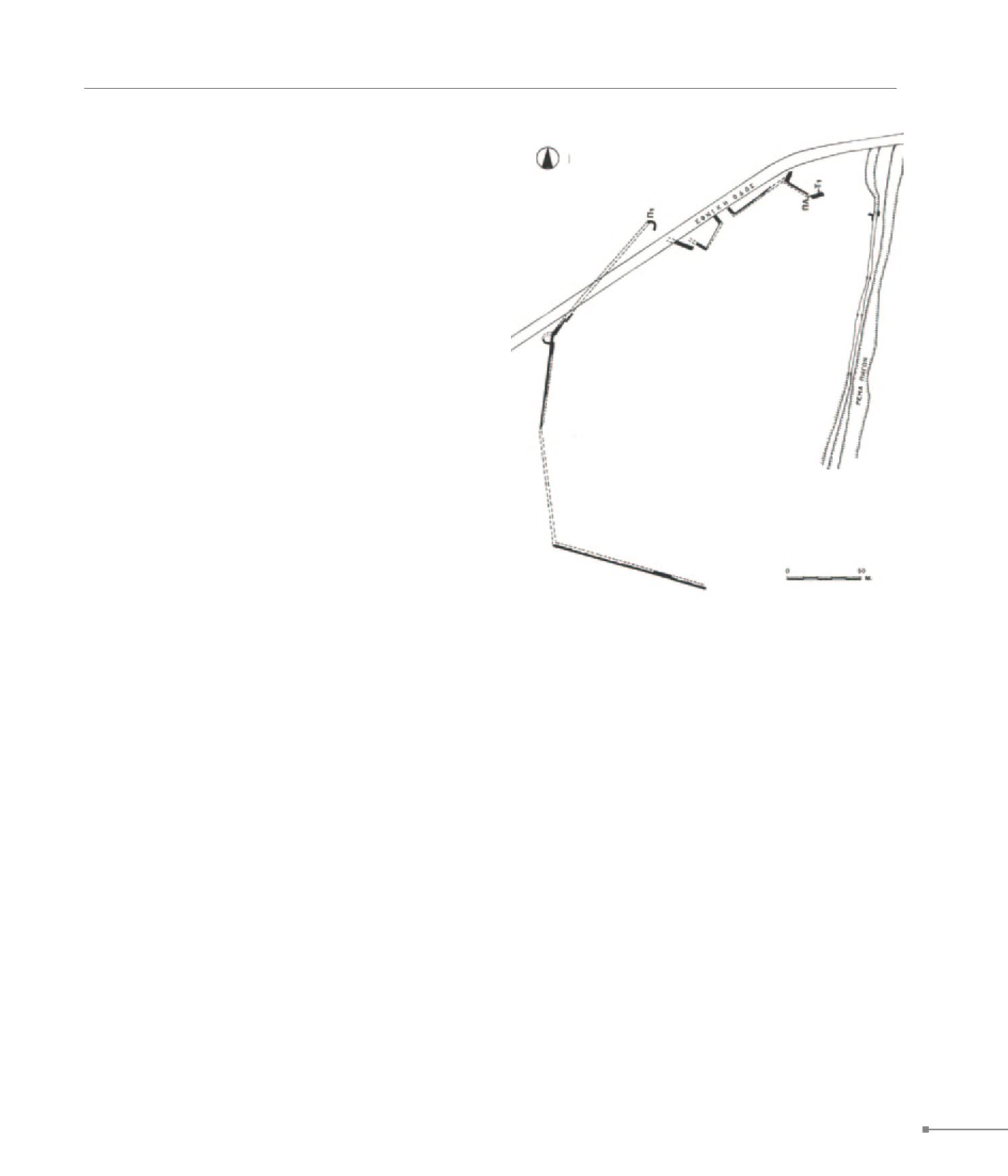
Paradeisos Nestou. Topeiros.
Nea Karvali. Akontisma.
MACEDONIA
99
29.
Paradeisos Nestou. Topeiros.
This site is located to the east of the existing village of Parade-
isos, at the intersection of the ancient Via Egnatia with the river
Nestos. On the river’s west bank once stood the city of Topei-
ros, an episcopal see of the Early Christian period, founded in
the first decades of the 1st c. Procopius reports that the fortified
city was besieged and destroyed in 549 by barbarian invaders,
and that after its destruction the walls were rebuilt by Justinian
I (527-565) and a diateichisma was erected from the city to the
river for more effective control of the Nestos bridge. The city’s
name during the Byzantine period is not known. Evrenos writes
in 1373-4 that the city was located across the Nestos riverbank.
After the Turkish conquest Topeiros was abandoned. Today the
ruined city is of an irregular trapezoid shape. Parts of walls and
towers survive; corner towers are circular, while interval tow-
ers are quadrilateral. Phases of the Roman and Justinian eras,
of the 7th c., and of the Mid- and Late Byzantine periods are
identified on the fortifications. An Early Christian basilica with
Byzantine modifications has been partly excavated; the site
has revealed architectural elements, pottery, and coins of the
Early Christian and Byzantine periods. An Early Christian cem-
etery stretches out on the slope N of the city, where the Roman
cemetery also lies. On Petrota Hill, higher than the cemetery,
remains of an Early Christian basilica with mosaic floor and ar-
chitectural components are preserved.
30.
Petropigi.
Quadrilateral station on the Via Egnatia with square corner tow-
ers and a gate in the S section. The earlier phase of the wall at
the station of Petropigi dates to the 10th c. Interventions and
repairs, dating back to the first half of the 14th c., have not –
generally − altered its size.
31.
Nea Karvali
.
Akontisma.
On a hill, E of the modern settlement are remnants of defensive
walls, possibly of Akontisma. The fortification dates to the 4th
or 5th c.
29. Paradeisos Nestou, enclosure, ground plan (Παράδεισος Νέστου, ο
οχυρός περίβολος, κάτοψη)


